Kangaroo Point Bridge
Brisbane, Queensland
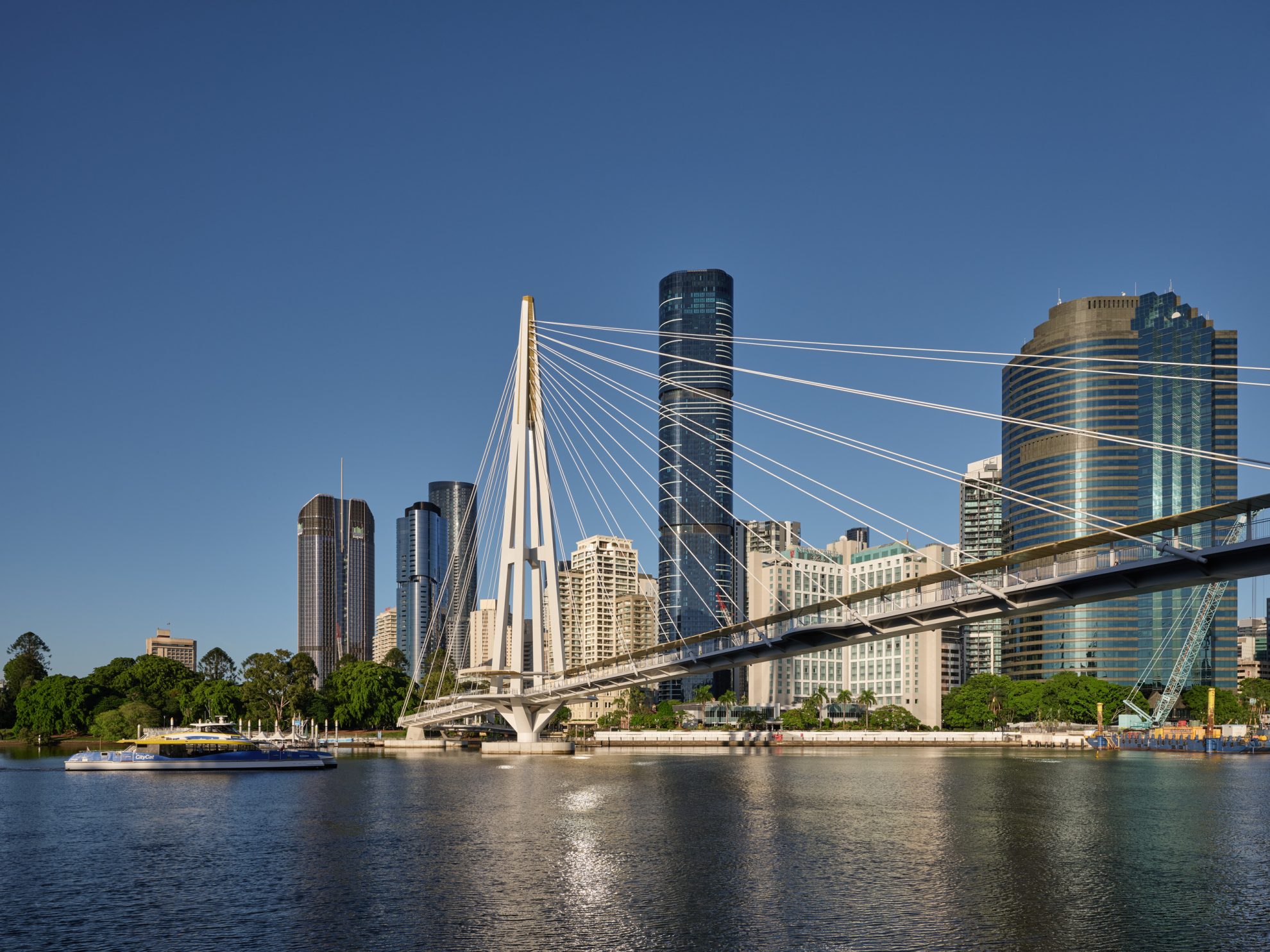
The Kangaroo Point Bridge (KPB) introduces a vital new pedestrian and cycle link between the city centre and the Kangaroo Point peninsula, opening opportunities for locals and visitors to connect, commute and enjoy Brisbane’s diverse riverside spaces and destinations.
KPB completes a tourism and recreation loop that includes South Bank, the Cultural Precinct, Roma Street Parklands, Queen Street Mall, the City Botanic Gardens Kangaroo Point Cliffs, City Reach Boardwalk and Riverwalk.
COX and Arup delivered the concept and reference design with Brisbane City Council. Born from a need for more active transport in the area, COX and Arup evolved the Council’s ambition for the bridge’s city-making design, supporting events and engagement. The design focussed on amenity and connectivity, including generous plazas at each end of the bridge.
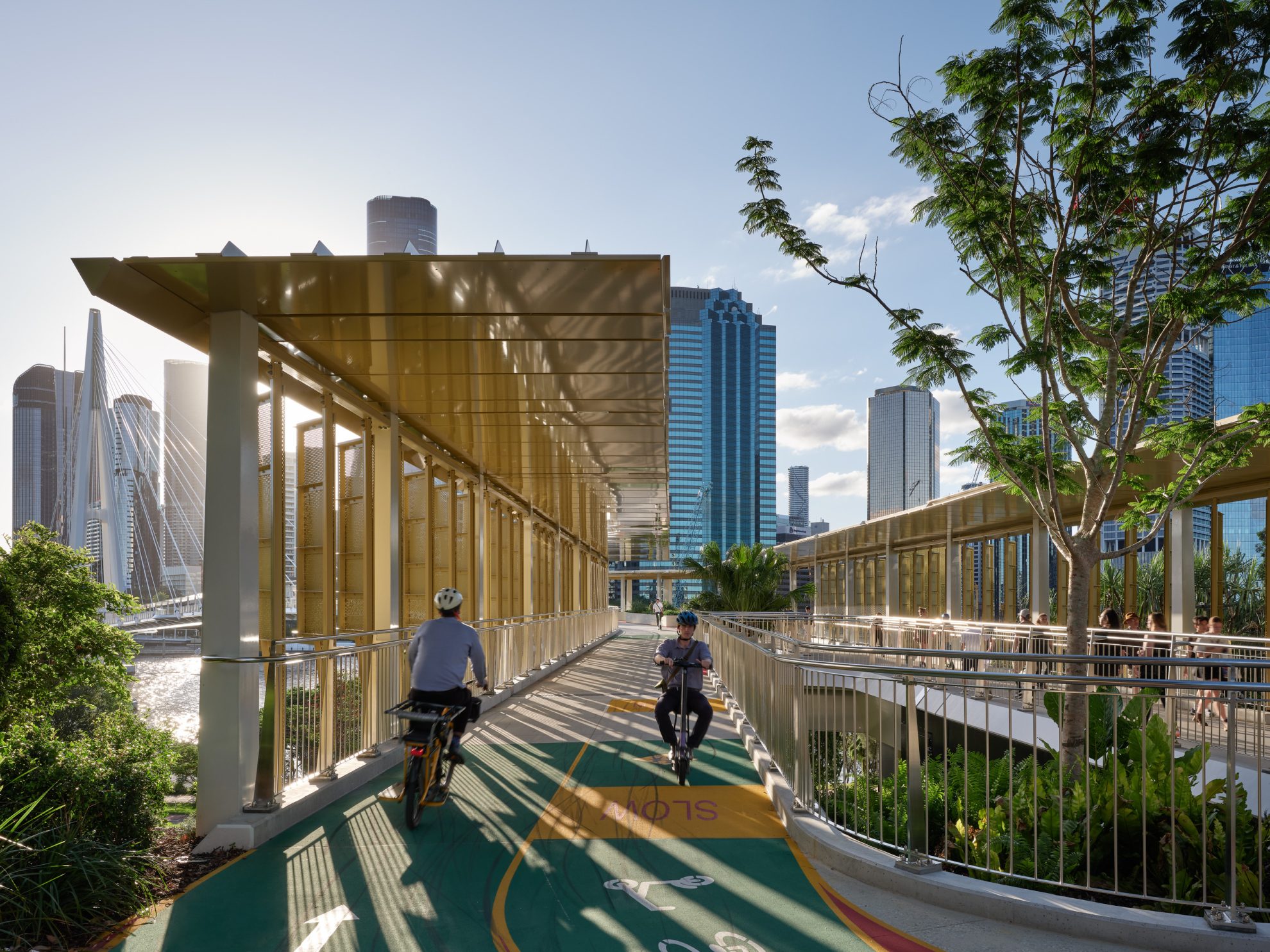
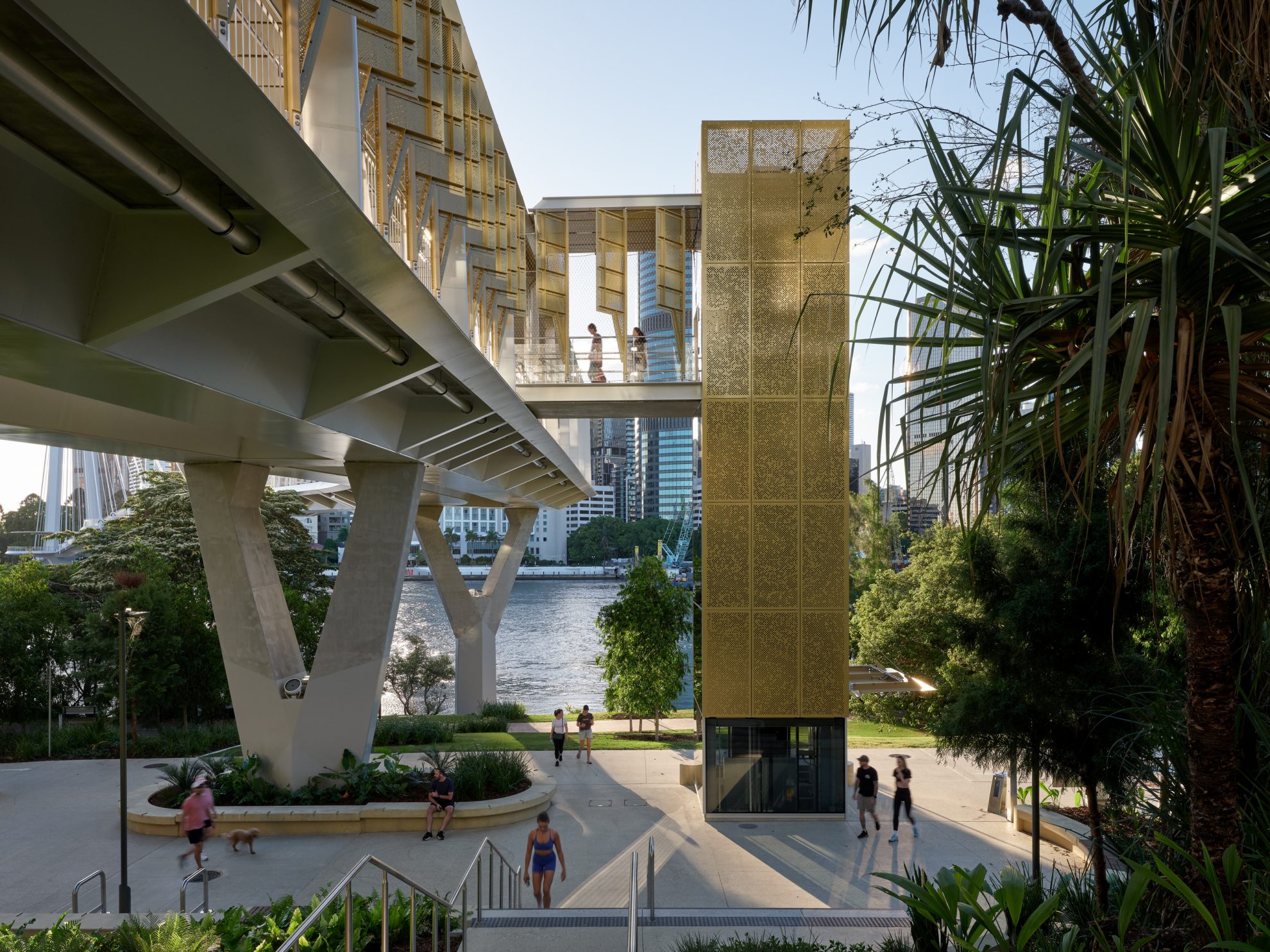
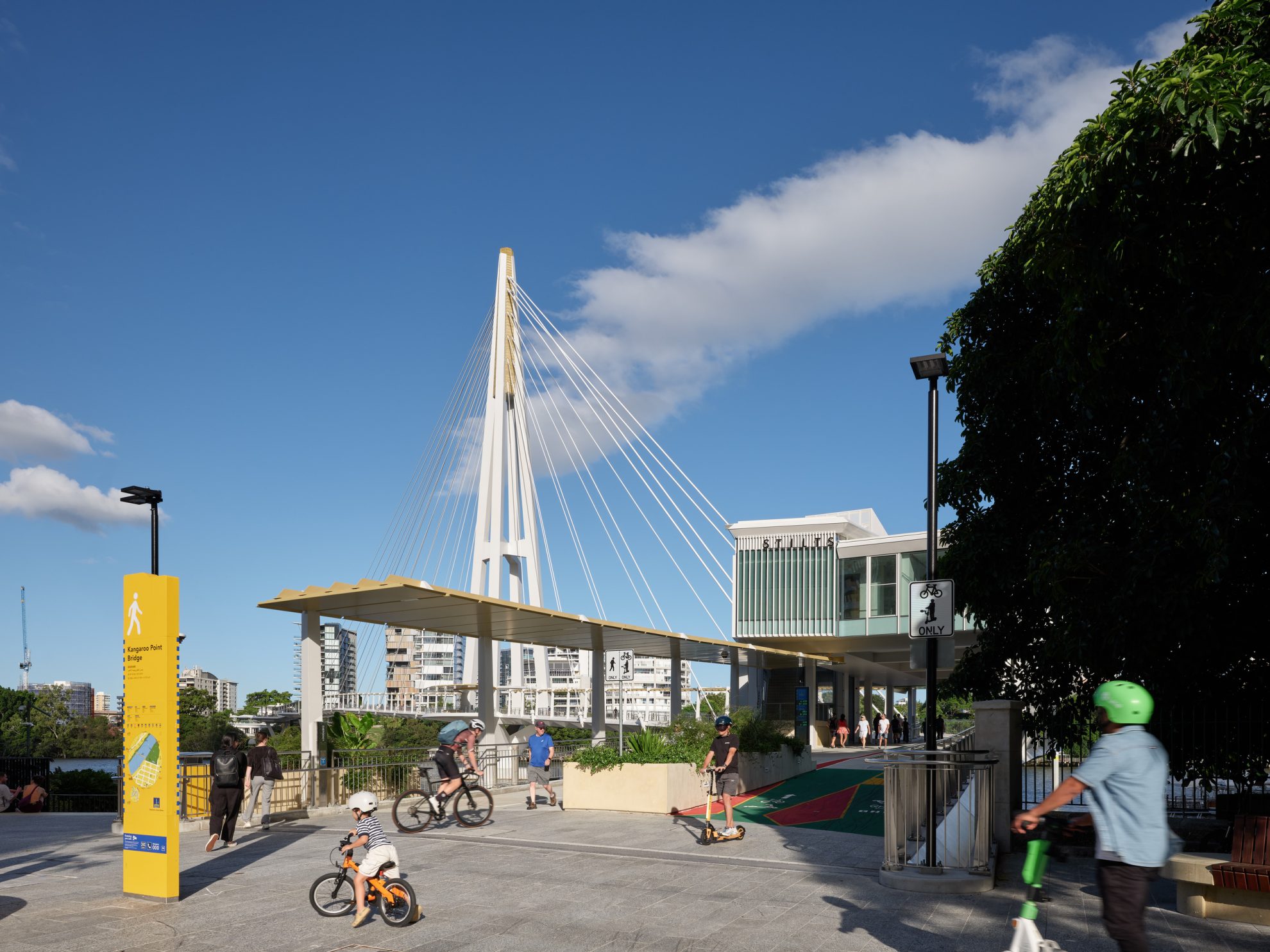
The elegant and sophisticated structure complements Brisbane’s skyline and iconic cliffs with a design that is responsive to climate, location, context, and views. KPB creates places at the river’s edge, respecting the landscape and cultural heritage of the City Botanic Gardens to create a memorable arrival experience and connectivity including new tourism opportunities. As part of this vision, the design has also accommodated food and beverage offerings; a city plaza cafe and a restaurant elevated above the bridge deck, providing new spaces for visitors to pause, gather, and enjoy the riverfront setting.
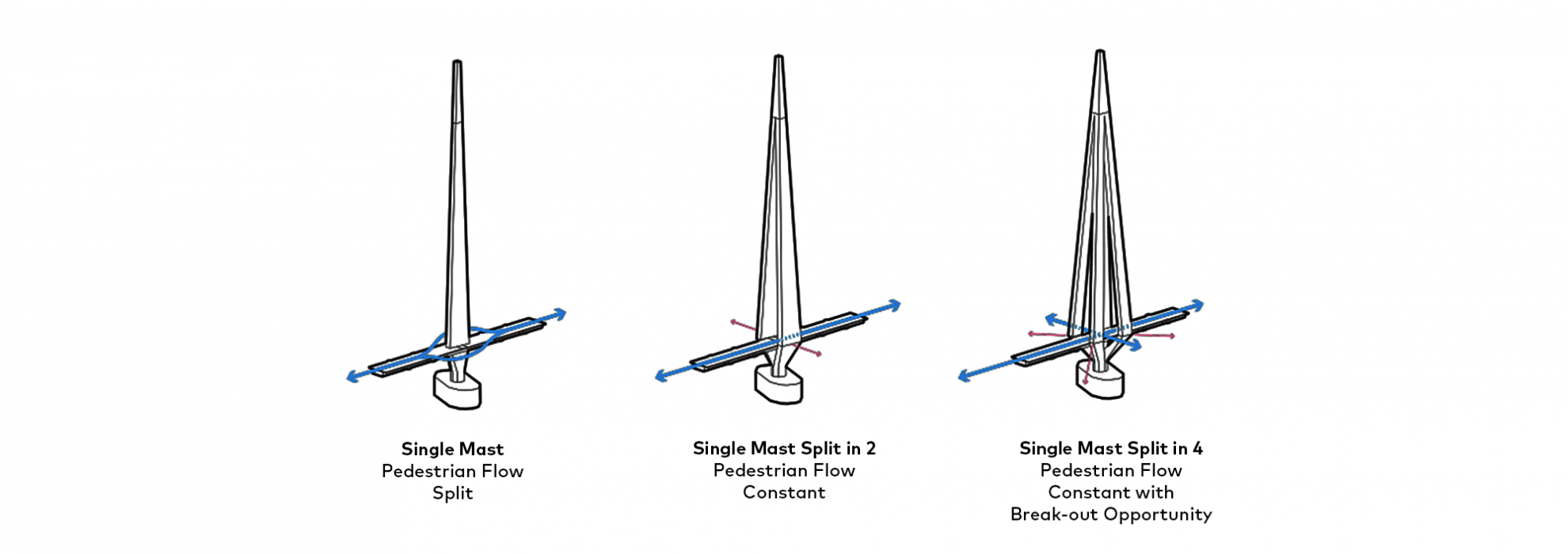
The defining characteristic of the KPB, the four-legged single mast tapering to a single support and offset to the city side of the river, was developed as part of the concept design. The single mast form and cable stay structure ensures the design is markedly different to that of the neighbouring Story Bridge, allowing KPB to create its own character, without encroaching on the iconic identity of Story Bridge.
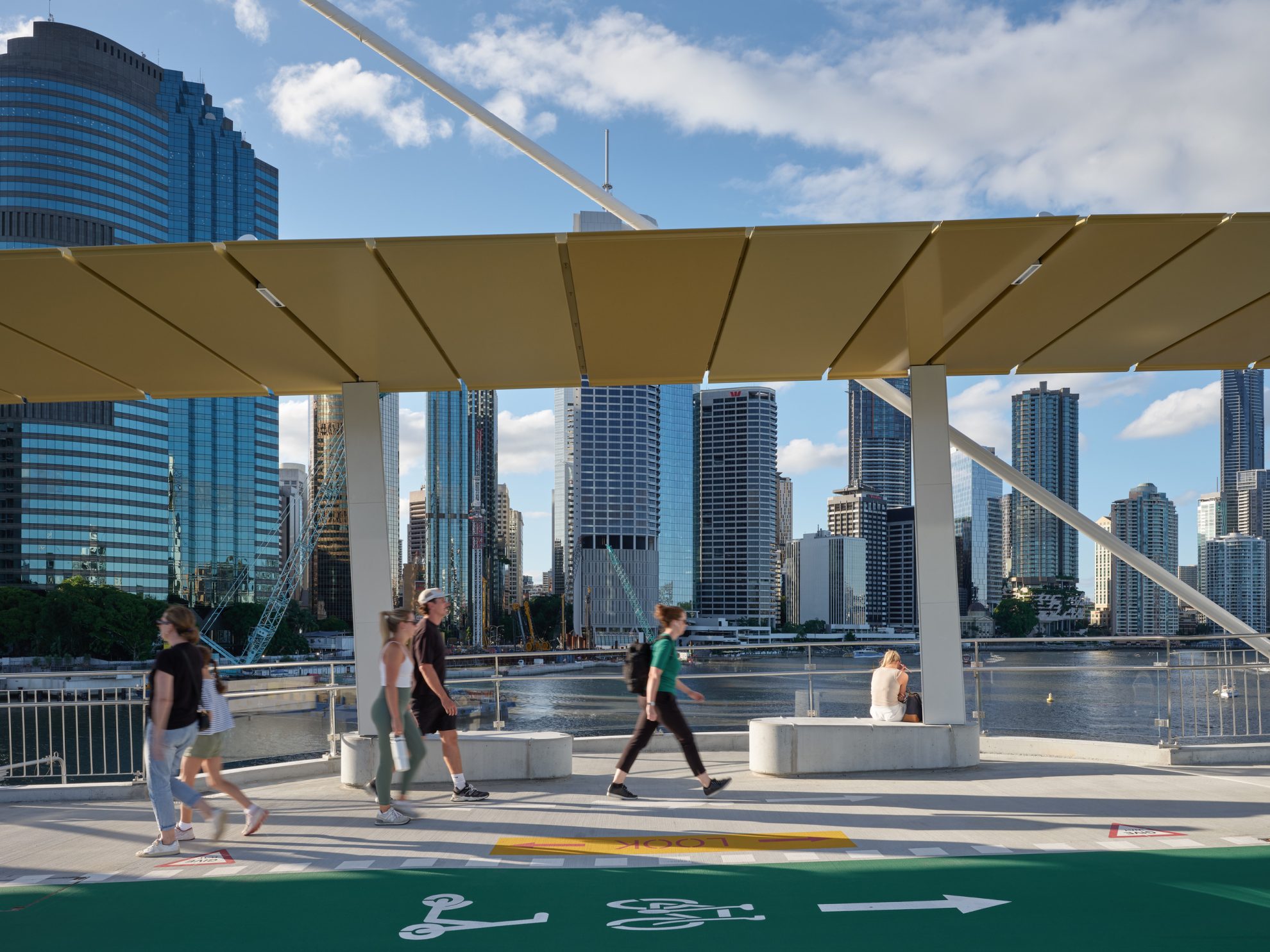
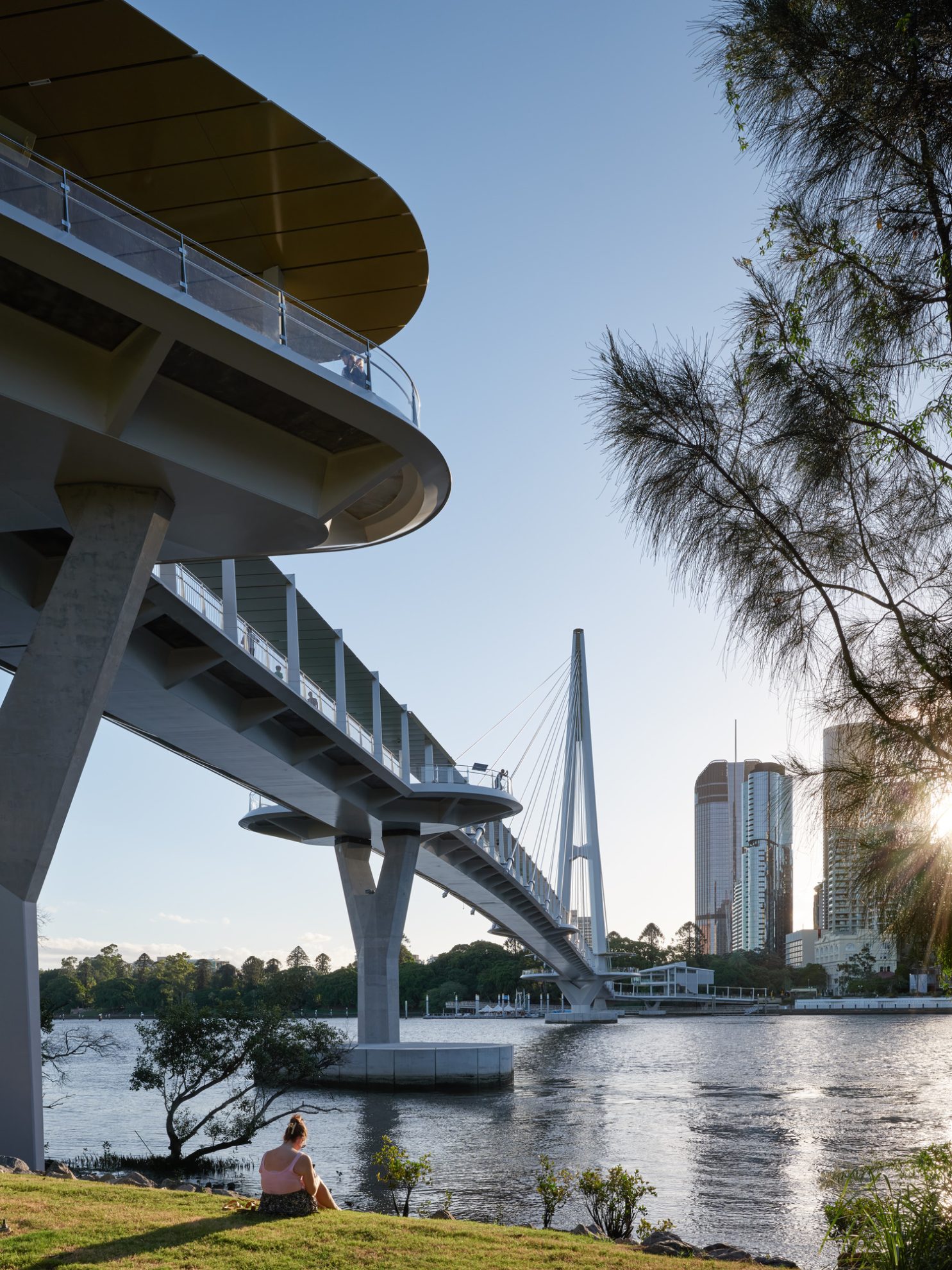
The form of the bridge was conceived as a series of threaded jewels suspended over the water, stretching across the Brisbane River with elegance and weightlessness. Reading as a familial collection of elements, the visual language of the main mast relates to all piers and pause point articulations.
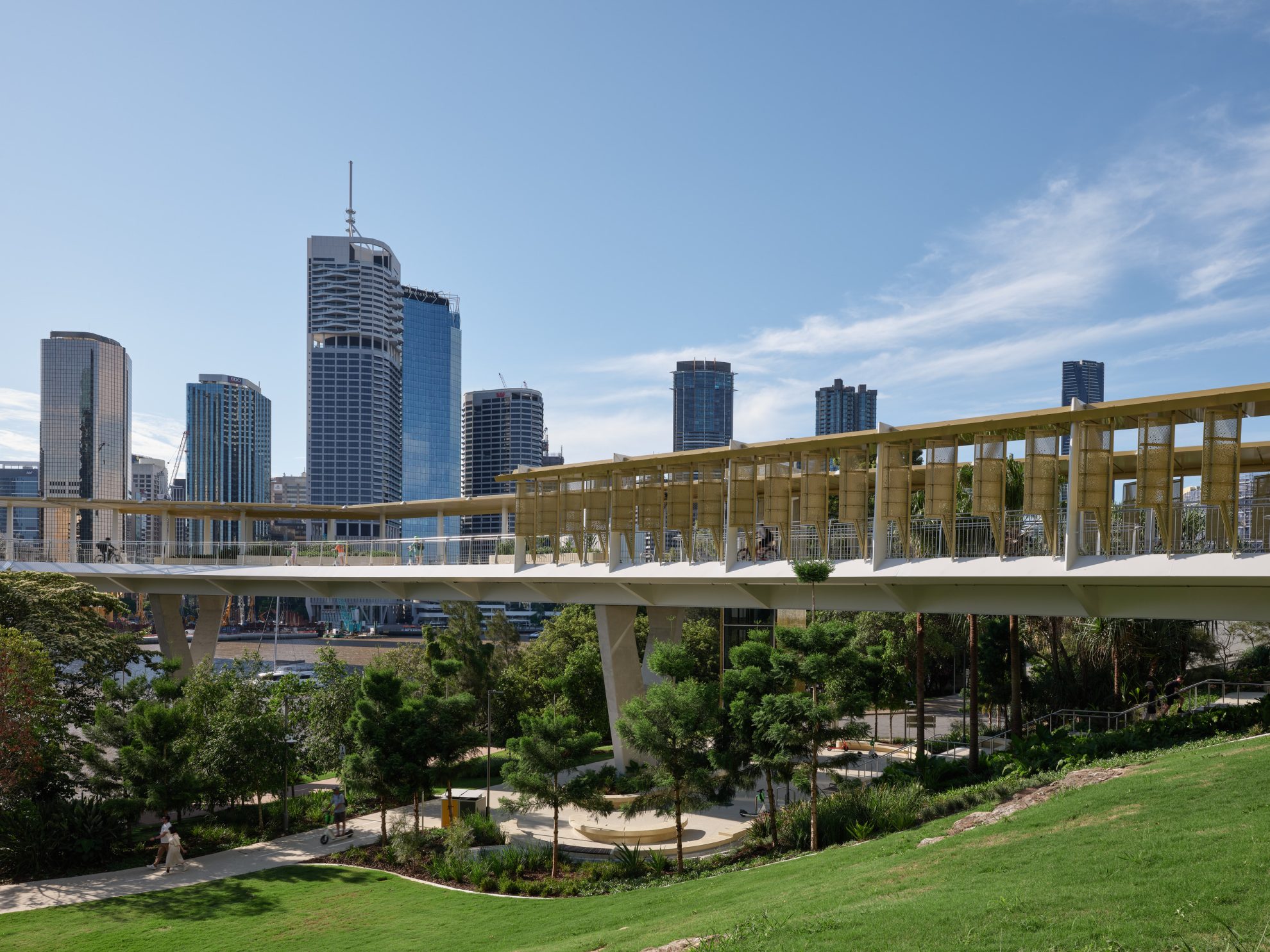
Importantly, KPB, which forms part of the Green Bridges Program, tackles traffic congestion, and improves public and active transport – creating a healthier city. KPB is getting people home quicker and safer with reduced congestion and wider transport options, giving residents the freedom to spend less time in transit and more time doing what’s important.
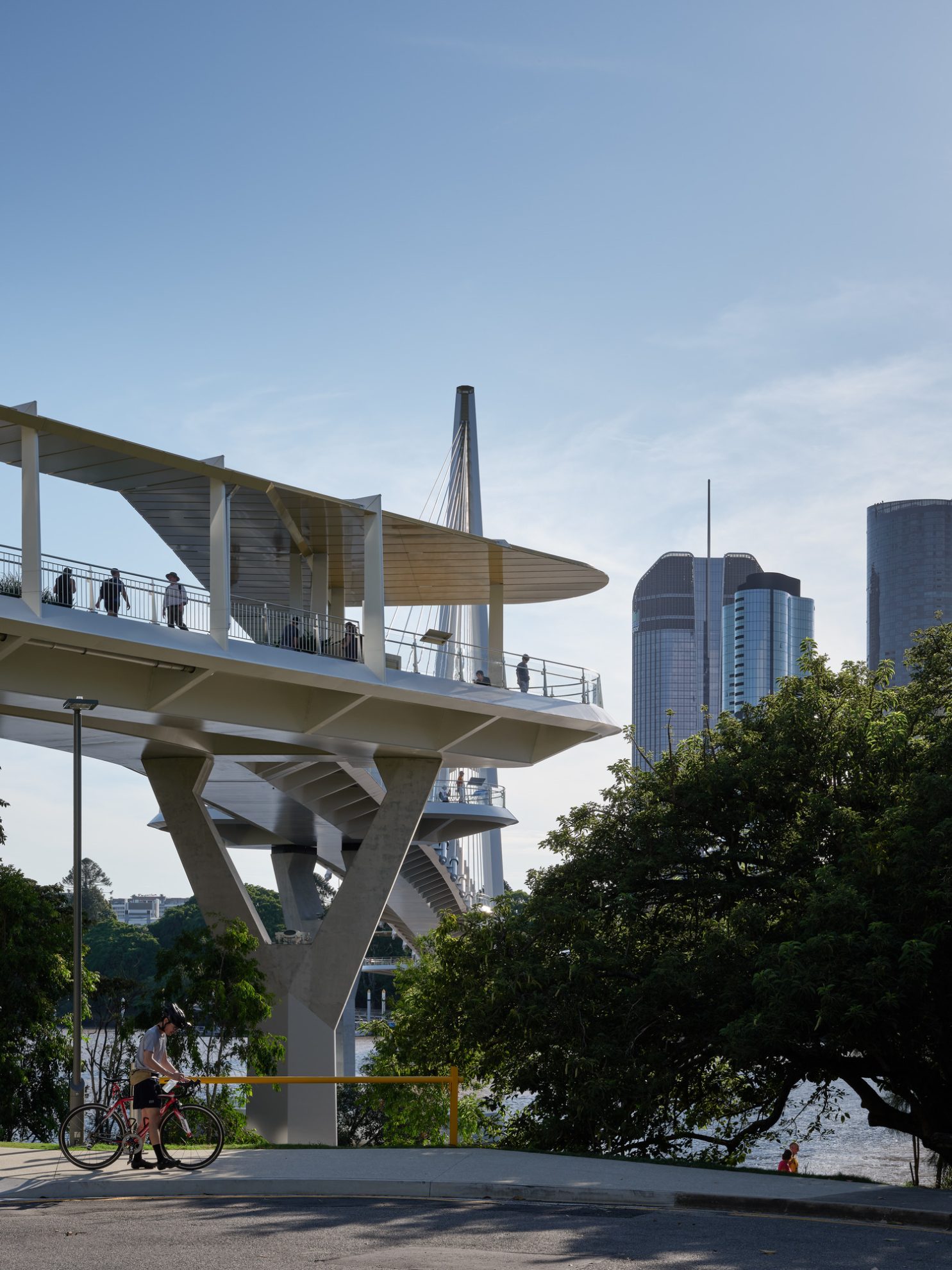

The scheme resolves the heritage considerations around the City Botanic Gardens entry and reinstates the iconic Jacaranda tree that has been a terminus for Edward Street for more than 100 years. A paired Poinciana tree forms the Bridge introduction at Scott Street.
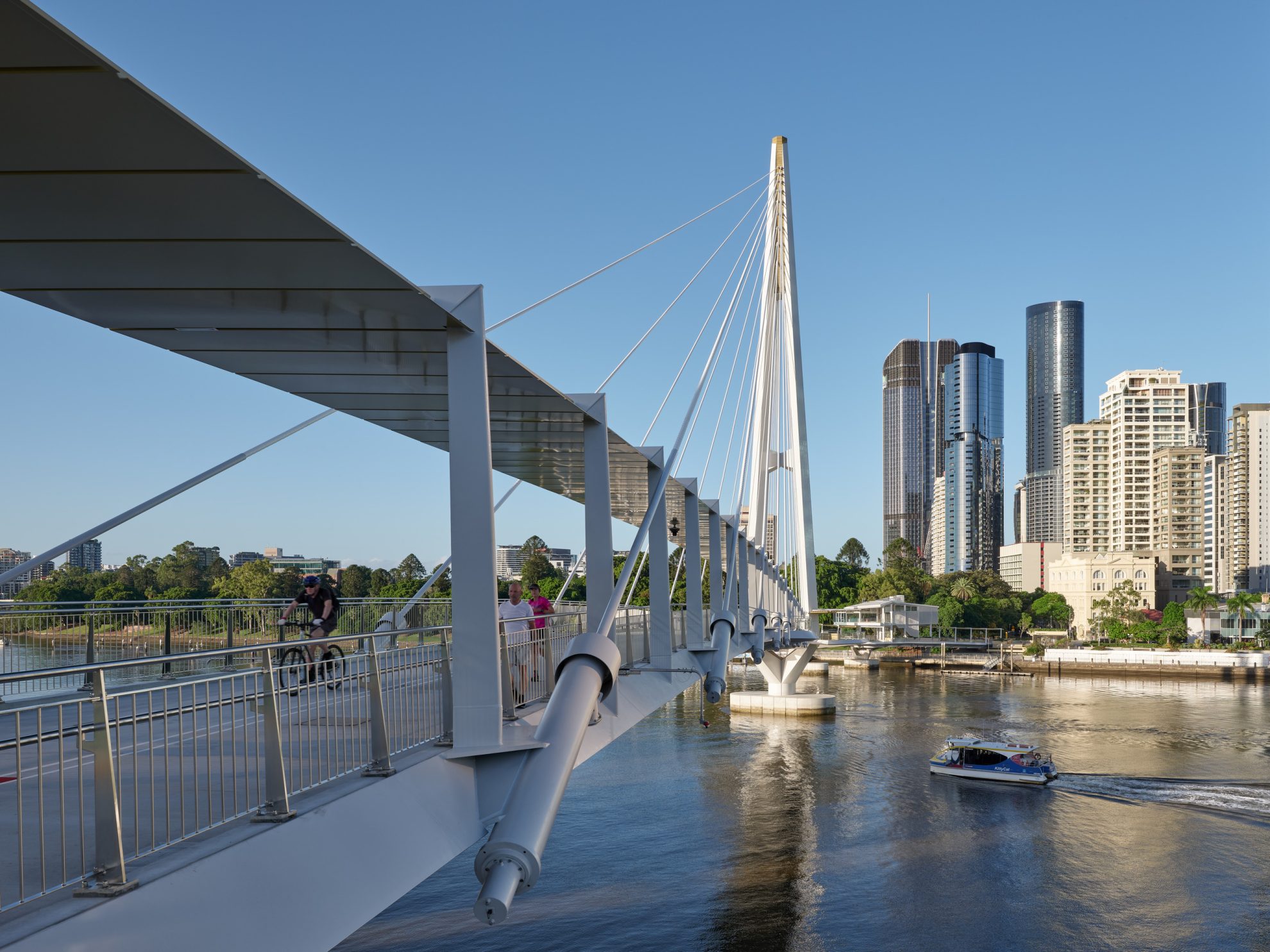
In 2019 Arup and COX were engaged by Brisbane City Council to determine the best crossing location, to establish the bridge vision and principles together and to establish the bridge form and urban design strategies and to prepare a reference design. COX and Arup were retained by Brisbane City Council as advisors through the D and C phase.
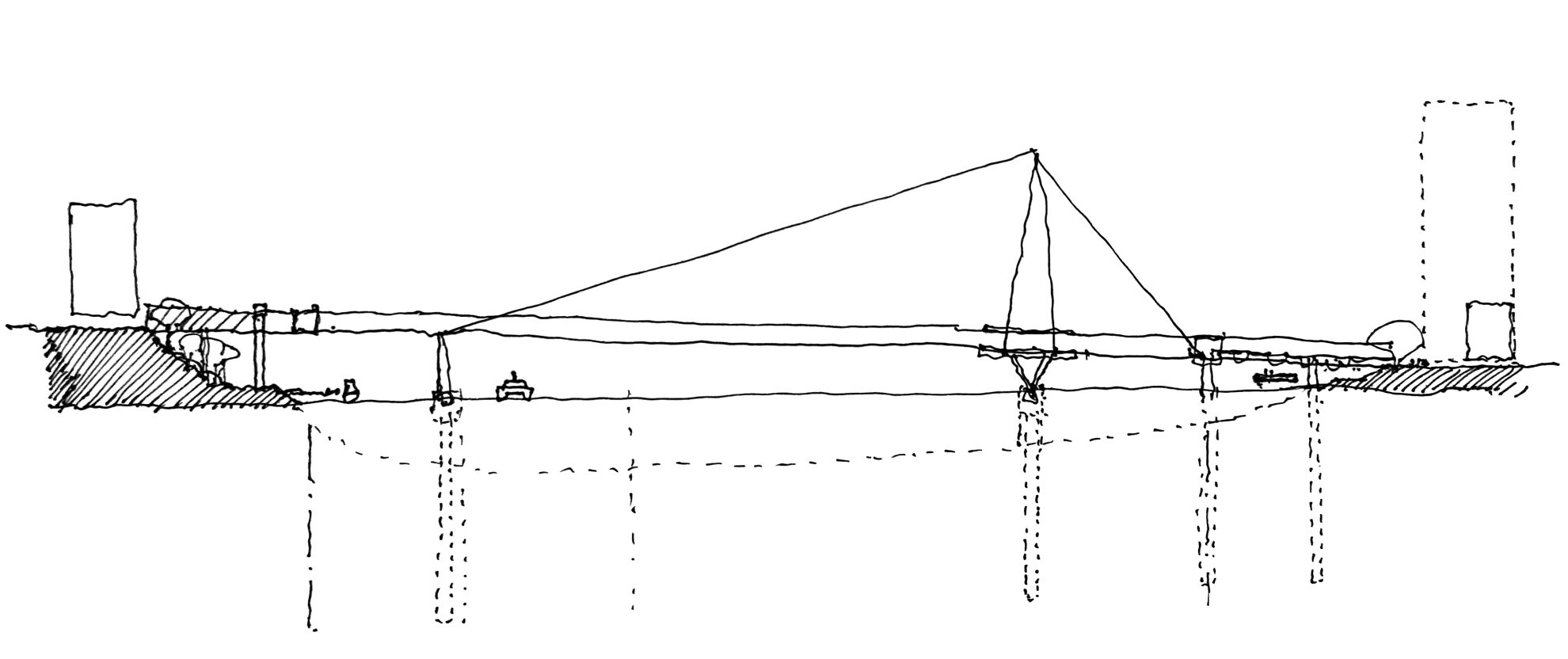

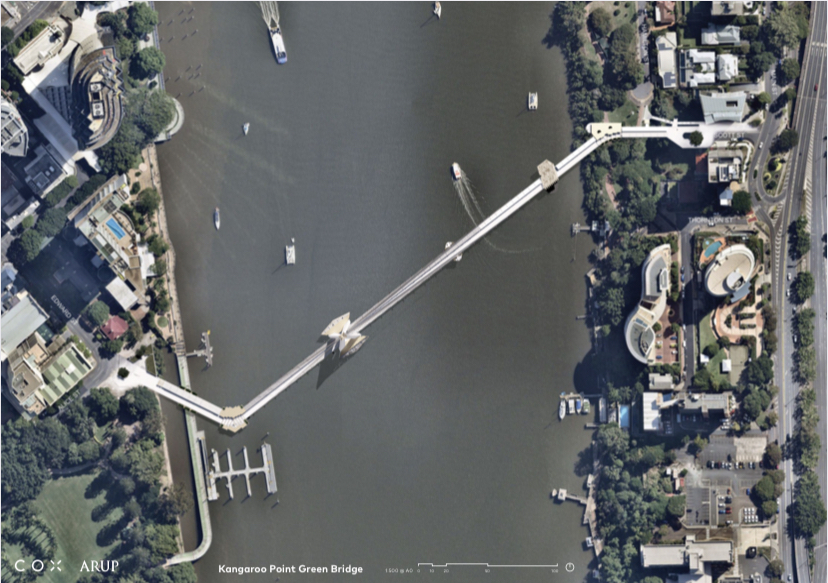
Sketch and renders from reference design.